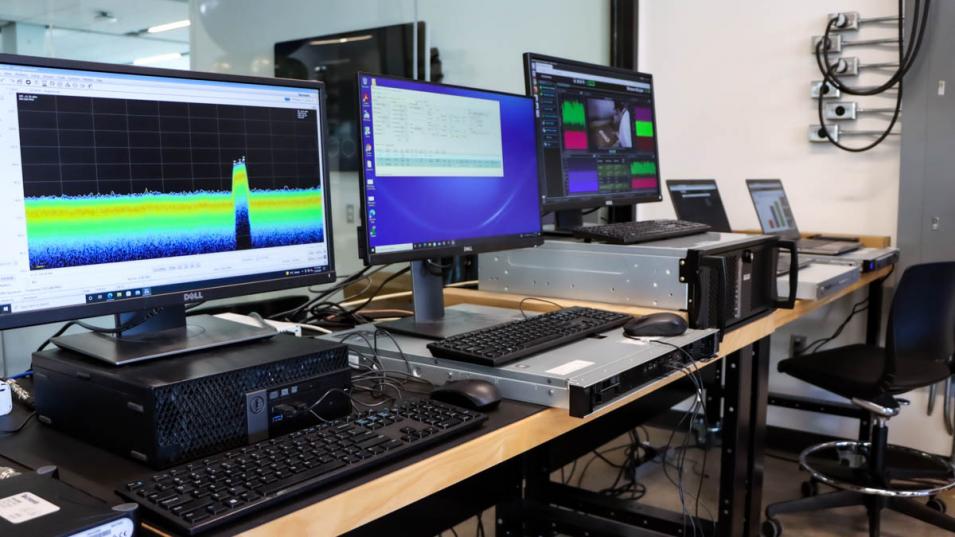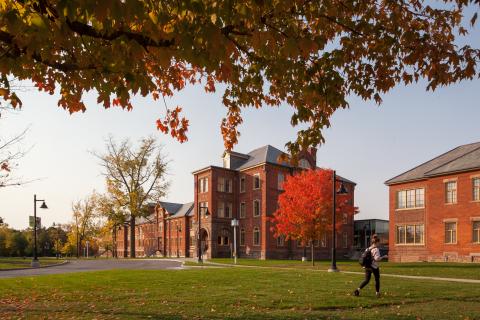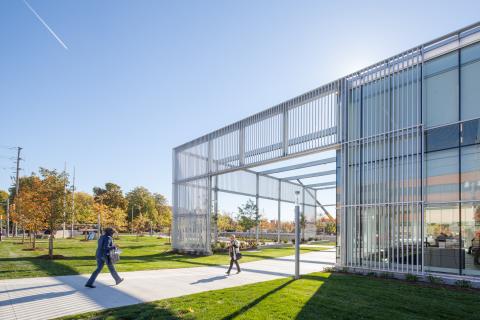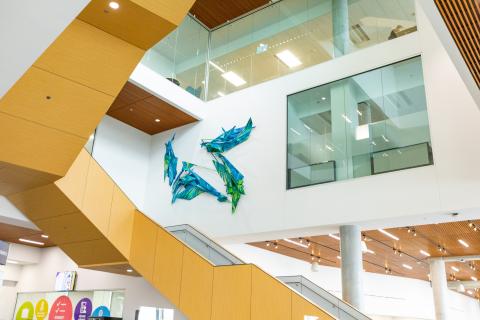Leading the way: Humber’s B²C Lab is the first of its kind in North America

At Humber College, we pride ourselves on being leaders in all we do, including pushing the boundaries of technology, innovation and creativity. And we will push them even further in 2022.
The Humber Broadband Convergence B²C Lab, housed at the Barrett Centre for Technology Innovation, is the first of its kind in North America. Phase one of the lab is now operational and will be ready for students, faculty and industry to begin to research and harness the possibilities of ATSC 3.0 technology in early 2022.
ATSC 3.0 is the next-generation global television broadcast standard set to replace the current standard (ATSC 1.0) in North America. The broadcast system runs on an Internet Protocol (IP) backbone that can work with other data delivery standards like Wi-Fi and 5G.
Here's how Humber’s ATSC 3.0 research could impact your everyday life at Humber and beyond:
Television interactivity
ATSC 3.0, also known as NextGenTV, offers interactivity, combining live television experiences like news or sports with interactive elements.
For example, when you’re enjoying the game and want to see the action from a different angle, ATSC 3.0 allows you to customize your viewing experience and choose a close-up or a different camera angle as part of a custom broadcast experience.
Data delivery
We live in a world of global data delivery standards like WIFI, Bluetooth, LTE and 5G networks. While these systems are all designed to work together to meet the growing demands of internet traffic on our devices, ATSC 3.0 can help address gaps in capacity and coverage.
GPS augmentation
Most of us use some type of GPS system every day and industries such as avionics, telecommunications, agriculture and transportation rely on the technology to enhance productivity and safety.
In places where there are gaps in reception, GPS signals can be supported with broadcast transmission via ATSC 3.0.
Have you ever driven into an underground parking lot and lost signal? ATSC 3.0 uses a radio frequency spectrum that is more robust and can more effectively permeate concrete and other barriers to support connectivity until the vehicle gets to surface and satellite-based GPS can be received.
Humber College was awarded a joint NSERC/CFI College Industry Innovation Fund grant valued at $4.5 million supporting lab infrastructure and growth of applied research capacity. The aim is to foster partnerships between Humber College and the private sector leading to business innovation at local, regional and national levels.
The B²C Lab supports multidisciplinary research and will hire approximately150 students over the next five years from a variety of programs and faculties at Humber.
Working as student researchers alongside faculty and industry partners, students will be at the centre of leading-edge research in the B²C Lab. They will be involved in developing, testing and deploying solutions supporting the adoption of ATSC 3.0 in Canada.
A formal launch of the lab will take place in 2022.



